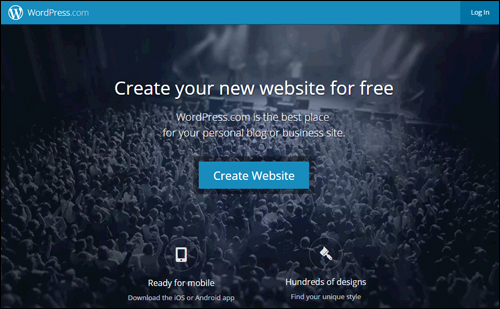
Welcome to Part Three of our Web Site Traffic Blueprint article series, where we show you how to drive new traffic automatically to your site using the WordPress CMS platform.
In Part 1 of this series, we explained why using an expertly configured WordPress site is the key to generating automated web traffic …

(With an expertly configured WordPress web site, all you have to do is post content regularly to automatically begin attracting web traffic!)
In Part 2, we focused on the setup phase of this process. We explained the best way to get started if you don’t have a website yet, how to set things up if you already have a website, and what to do if your existing site was built with WordPress.

(In Part two we show you how to set up WordPress on your domain)
In this article, we look at the configuration stage of the traffic automation process. You will learn why an expertly configured site is different. You will also learn just what kind of work needs to be done to ensure that when everything is set up and configured, you can automatically get web traffic as you start to publish web content to your web site.
WordPress Traffic Automation Blueprint – Configuration
The ability to attract more visitors to one’s website is often cited by most website owners as one of the greatest challenges they face online. Businesses are becoming so much more competitive and are looking for every advantage they can to improve their performance online.
The ability to automatically generate traffic on demand can provide you with a huge advantage over other competitors. For business owners, an expertly configured website means having an immediate advantage from the very beginning.
The Configuration Phase Is The Difference
There is a significant difference between an expertly configured WordPress site and a site that has been professionally installed and set up by an expert website builder but not necessarily configured to its fullest advantage.
Here’s a simple way to explain the differences:
An expertly configured WordPress website gives you a professional web presence with an automated online business marketing process!

(An expertly configured website gives you a web presence with a built-in automated online business marketing process!)
Not only does it take additional labor to build and integrate an automated online business marketing system into your website, but also a special type of expertise.
Let’s illustrate this with an amusing story.
Ludicrous Or Fair? You Decide …
Everything is running smoothly in the gizmo-making factory when things suddenly grinds to a stop.
As no one can figure out what is wrong, the floor manager decides to call in an expert.
The expert arrives within the hour and, without uttering a word, heads directly towards the main control box. After staring silently at the electronic components for 5 minutes or so, the expert then produces a tiny little hammer and makes a very gentle tap about 1 cm from the left corner of the box.
Immediately, everything begins to work as before.
The floor manager is overjoyed as he thanks the expert, who leaves as quickly as he had arrived.
A few days after resolving the incident, the factory manager receives an invoice for $5,000.
Outraged and furious, the factory manager dials the expert. Demanding to know why they were charged such a large amount of money for so little time spent delivering such minimal amount of work, he promptly requests an itemized invoice and hangs up.
The next day, an invoice arrives and is placed in the manager’s intray. Upon opening it, this is what he sees:
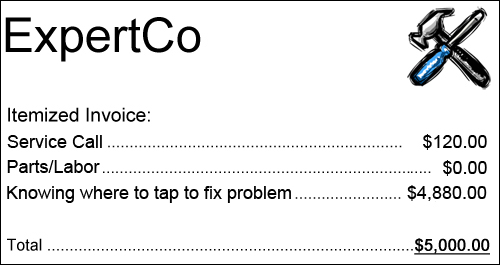
The #1 challenge most businesses face online is being able to drive traffic to their sites.
In the above story, how much money did the widget plant stand to lose when production ground to a halt and no one on the business had the expertise to fix it? Did the expert not have the right to get paid fairly for years spent building up the knowledge and expertise that enabled him to quickly assess and avert a serious crisis?
Similarly, if you could have a WordPress site set up so all you have to do is publish new content and Google, Facebook, Twitter, LinkedIn, Pinterest and dozens of other web properties would be immediately notified, how much time and money would you save?

(How much time and money would you save if you could automate the process of attracting new visitors to your website?)
While many experts often make difficult situations and problems look simple, it rarely turns out to be that way.
Knowing how to expertly configure a WordPress site requires more than adding some pages with content and configuring a few internal settings. It also requires knowing where to tap! In other words, knowing things such as:
- Which plugins need to be installed to get specific functionalities on your site.
- Which 3rd-party accounts need to be set up and activated to get certain results
- Which internal and external settings you need to configure to ensure that everything will function as envisioned, etc.

(Driving traffic automatically with WordPress is a process that requires expertise)
Although this part of the traffic automation system may not seem technically challenging, it can be quite involved. It’s not as easy as installing a solution, clicking on a button or two, or configuring some options and settings in your admin area … it’s all this and so much more.
The configuration stage involves the integration of many different parts including your web server, your web site, and various external sites …

(The configuration phase involves more than just configuring a few WordPress settings)
If we try to flowchart the activities involved in the configuration process, it would look something like this …

(A simplified flowchart of the steps involved in the configuration process)
Let’s examine what’s involved in more detail.
Your Web Server – Configuration
We’re not talking about the process of configuring your webhosting account for installation purposes. What we are talking about, is fine-tuning settings and options in your webhosting account that affect how you will handle web traffic …
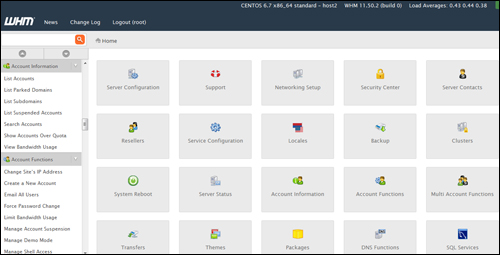
(In the configuration phase, your server settings need to be fine-tuned for handling both good and bad traffic)
Not all web traffic is beneficial traffic. Some of the traffic your business may attract will be unwanted traffic like spam, malicious threats, bot-hacking attempts, etc.
This stage of the configuration process, therefore, is all about planning for both bad and good traffic and adjusting settings in your server accordingly. This can include things like spam protection and security threat prevention, to configuring your domain and email forwarding, setting up htaccess and 404 redirections, etc …
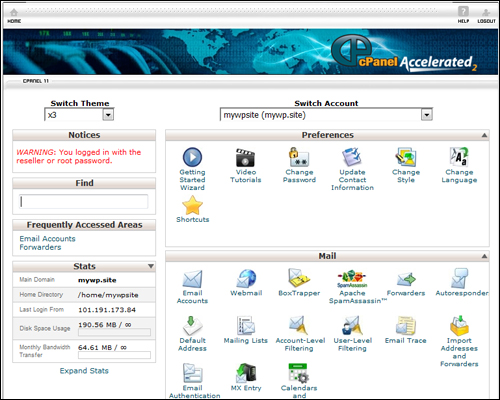
(Have you configured your webhosting settings for handling things like email forwarding, page error redirections, etc?)
Once your server settings have been fine-tuned and configured, the next step of the configuration phase is to set up various third-party sites.
External Services
The basic idea of adding external sites is that all of your content should be posted to one central location (your WordPress site) and from there, get distributed automatically to other components of your web traffic generation system, or notify traffic-related web properties and applications.
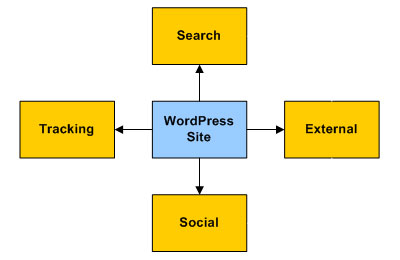
After incorporating these external sites into your network, content with links pointing back to your website will be automatically posted to search, social and aggregator accounts. Your content and website will be given added exposure to a new audience and new sources of traffic.

Some of the sites and online platforms will need to be set up before configuring your WordPress settings to help speed up the configuration process and some will need to be done later, during the automation phase.
For example, you will want to set up the following accounts:
Google Webmasters

(Google Search Console – create a Google-friendly site)
Google Webmaster Tools lets you tell Google about your site’s pages, submit XML sitemaps for faster page indexing, and provides site owners with useful data, SEO tools, and diagnostic reports about their website.
After setting up your Google Webmasters account and entering site data, you can use this information with traffic settings in WordPress (e.g. using plugins like Yoast SEO – see further below) and other applications.
Google Analytics
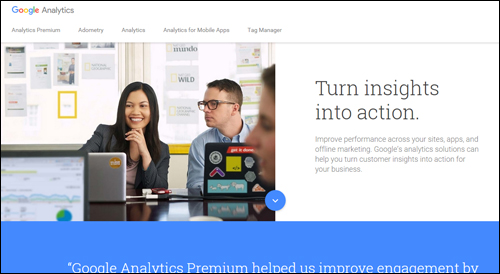
(Google Analytics)
Google Analytics lets you improve your site’s performance, SEO, user engagement, marketing efforts, sales conversions, and more, by tracking all user behaviour, pages visited, keywords searched for, social media referrals, etc.
After setting up your account and site data, tracking information can be integrated with WordPress via a simple Google Analytics plugin used with other applications.
Bing Webmaster Tools

(Drive more traffic with Bing Webmaster Tools)
Bing Webmaster Tools is similar to Google Webmaster Tools. Once your account is with Bing have been set up, use the information to integrate and automate traffic settings and notifications in WordPress and other applications.
WordPress.com
(WordPress.com)
As explained in Part Two, WordPress offers both the option of a hosted vs self-hosted website. We recommended choosing the self-hosted WordPress version if you are planning to build a professional online presence for your business.
WordPress.com (the hosted option), however, provides some great features, which can be accessed by various WordPress plugins. We recommend setting up an account with WordPress.com, therefore, and we’ll show you how to integrate this into your traffic generation system in Part Four of this article series.
Social Media Sites

(Syndicate your content automatically to your social media pages and get new visitors to your site)
You will need to set up your various social accounts in order to integrate these with your traffic generation system.
After setting up and configuring everything, you will be able to syndicate your content automatically to your social media and social bookmarking accounts and drive new traffic to your site.
You should have pages set up with all the leading social networks – Facebook, Twitter, LinkedIn, Pinterest, YouTube, etc.

There are lots of social bookmarking sites you can set up. You don’t need to go crazy, just choose the ones that will work well with your setup and/or content syndication tools.
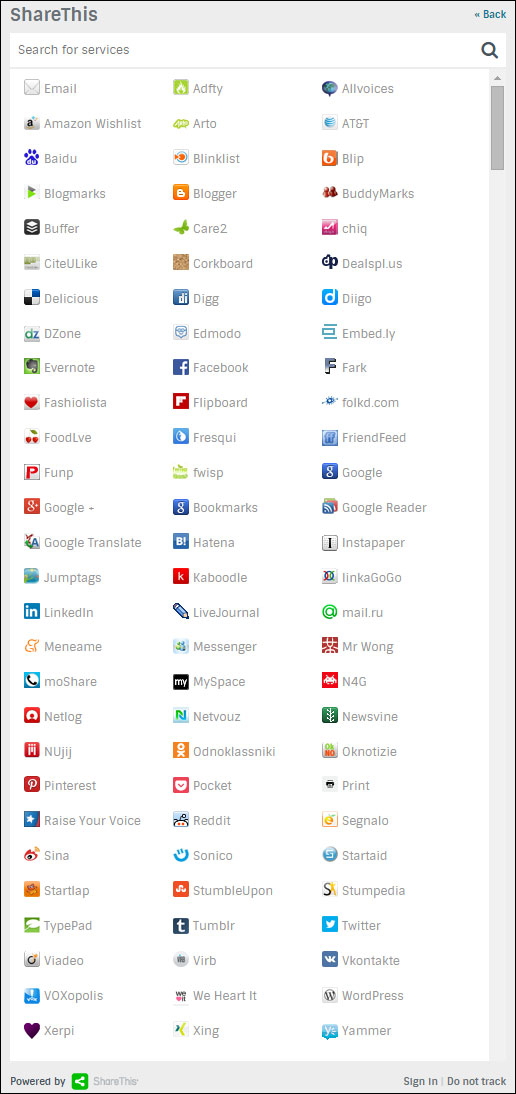
(There are many social bookmarking sites you can post your content to. Image: ShareThis.com)
Additional Solutions, Aggregators, Etc.
There are many emerging web platforms and content aggregators that can act as secondary traffic generation sources. Some are free or provide free access levels, and some offer a range of pricing plans.
For example, here is a content aggregator site that lets you add your WordPress blog feed …
RebelMouse
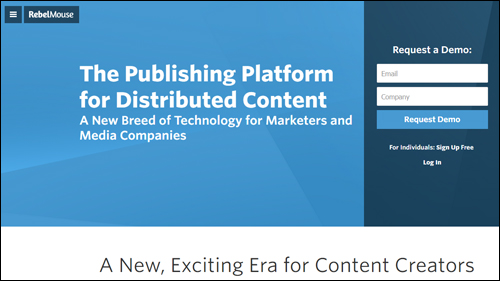
(RebelMouse – Distribute your content to social networks)
RebelMouse is a news aggregator for your social profiles and RSS feeds. Your content is displayed in a Pinterest-like format and visitors can follow your website.
![]()
There are various sites and platforms that can be incorporated into your traffic system. Please contact us if you would like to explore some of these and discuss a configuration plan to suit your needs.
Once you have configured your server settings and set up accounts with external sites, it’s time to configure your site’s settings.
Configuring WordPress For Traffic
The first step in configuring your site for traffic is to make sure that its global settings have been set up correctly.
Let’s go over some key areas.
Global Settings
The WordPress admin area contains a Settings section that allows you to set up your site’s main settings …

(WordPress settings section)
General Settings
Fields like Site Title and Tagline can influence your site’s SEO, search listings, etc …
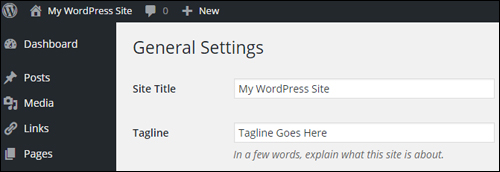
(Settings Menu – General Settings)
Writing Settings
The Writing Settings section contains an important and frequently overlooked built-in traffic notification system …
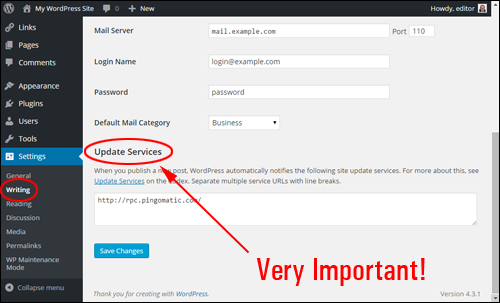
(Global Settings – Writing Settings Screen)
As described below the Update Services section title,
When you publish a new post, WordPress automatically notifies the following site update services …
Unless you or your webmaster have intentionally configured your site settings to prevent search engines from indexing your site – see next section, then your site will automatically ping the list of update services entered into the Update Services text area
With an ‘out of the box’ WordPress installation, this section lists only one entry …

(Writing Settings – Update Services)
You can notify dozens of update services automatically with WordPress …
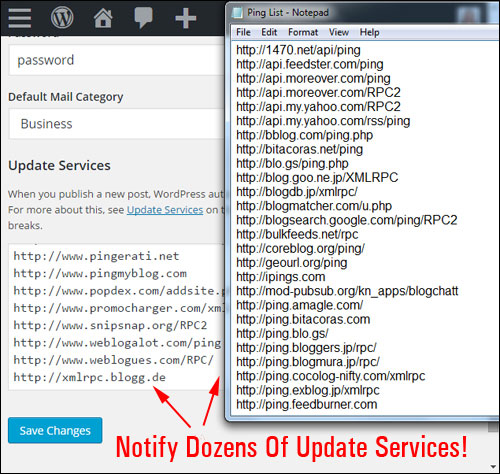
(Notify dozens of update services automatically with WordPress!)
![]()
Download A Comprehensive List Of Ping Services For Your WordPress Site!
Click the link below to download a comprehensive list of reliable and authoritative ping services for your WordPress site or blog:
Download A List Of Ping Services For Your WordPress Site
***
Note: If you need help setting up the list of ping services on your site, we recommend using a professional web services provider. You can find professional WordPress service providers in our WordPress Services Directory.
Reading
This section affects how visitors will see your content when they visit your home page and blog pages.
The syndication settings on this page can influence traffic. For example, your choice to display the full text vs summaries of your post, affects how your content displays to users in RSS readers and blog post digests, and could affect someone’s decision to explore your content further, and whether or not they will visit your site to read the rest of the content from a partial feed, or read the content in full without the need to click through to your site.
The most important setting in this section as far as traffic is concerned is whether the Search Engine Visibility feature is ticked or not.
Generally, you would want search engines to visit your site. Leaving this box unchecked allows your site to instantly ping various update services when a new post gets published (see Writing Settings above). Unless there is a specific reason to discourage search indexing spiders from visiting your site, make sure this box is left unticked …
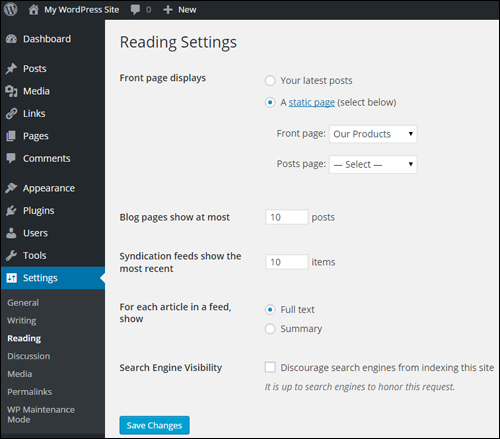
(Settings Menu – Reading Settings Screen)
Discussion
Although this section is mostly concerned with how users engage with content on your site, you have the option to allow notifications to sites linked to from your articles, and to allow link notifications from other blogs (pingbacks and trackbacks). This can work for you, but it can also drive bad traffic in the form of SPAM comments …

(Global Settings – Discussion Settings Screen)
Permalink Settings
Permalinks enable your site to publish posts with SEO-friendly URLs …
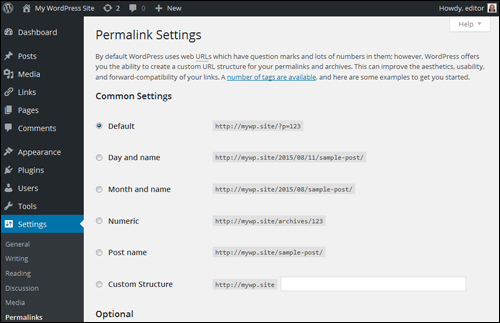
(WordPress Settings – Permalink Settings Screen)
The examples below show some of the ways permalinks can be configured …
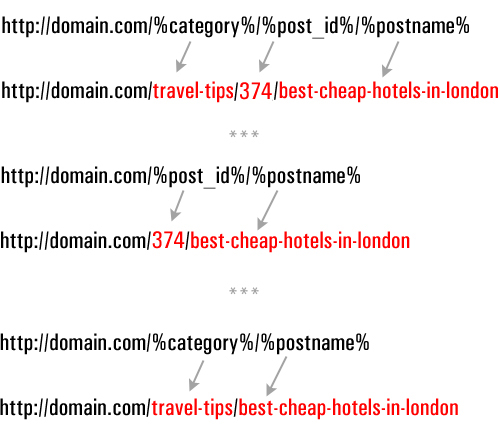
(Configuring SEO-friendly URLs)
To learn more about setting up permalinks, see this step-by-step tutorial: Improve Your WordPress SEO Using Permalinks
WordPress Plugins – Configuration
The WordPress developer community makes available thousands of plugins that can add almost every kind of functionality imaginable to your site, including plugins with features that help to improve traffic generation.
Let’s take a brief look at some types of plugin categories that affect traffic and plugin examples
WordPress Security Plugins – Blog Defender
Once again, it’s important to configure your website for handling both good traffic and bad traffic. No site is completely safe from a cyberattack.
 (Security Plugins stop bad traffic from causing your website harm)
(Security Plugins stop bad traffic from causing your website harm)
Security plugins like Blog Defender help to make your blog invisible to botnet and hacker attacks.
For more details, go here:
SEO Plugins – Yoast SEO
WordPress SEO plugins help drive traffic by improving the search engine friendliness of your web pages …

(WordPress SEO plugins help drive traffic by improving your website’s ability to rank better in search engines)
Use a powerful plugin like Yoast SEO to improve your site’s SEO. When properly configured, this plugin not only makes your website easier for search engines like Google and Bing to find and index, it also lets you specify how to display your content to Google’s search results and social media sites Twitter, Facebook, and Google+.
Social Plugins
Allowing visitors to share your content with others can help drive more traffic to your site, especially if you provide great content that adds real value to readers.

(You can easily add social sharing features to your site using WordPress plugins)
You can add social sharing features to your website easily with free or inexpensive plugins.
Many social share plugins allow you to choose which social sites your content can be shared to, embed social buttons into your content, set up custom notifications, display/hide share counters (e.g. number of likes), etc. Some plugins even allow you to ‘lock’ content or downloads which visitors can unlock by sharing your page.
Theme Settings
As well as configuring various plugins, many WordPress themes also include features that help you drive more traffic to your site.
For example, as well as options and settings for configuring design and layout elements of your site, many themes also include built-in features that let you improve search optimization and site linking structure for faster indexing, add tracking code, social sharing buttons, etc …

(Many WP themes like Graphene (a highly customizable free theme) come with built-in traffic optimization features)
With a number of WordPress themes, adding social sharing buttons to your pages is as easy as clicking a few buttons and enabling the function …

(Many WordPress themes have built-in social sharing features)
WordPress Traffic Configuration – Additional Don’t Forget These
Last (but by no means least) in the web traffic system configuration process, are the components that need to be set up outside of the global settings.
These include:
Website Legal Pages
Once again, when preparing your site for a growth in traffic, it’s important to plan not only for how to handle bad and good traffic but also for all the things that can go wrong when more and more people start finding and visiting your website.
If you are making money online, you need to ensure that your site is found to comply with legal requirements of government agencies that regulate online business practices.
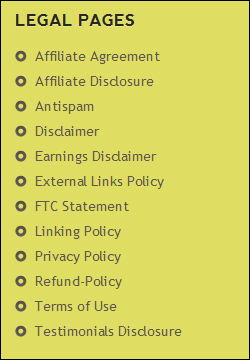 (Is Your Website Or Blog Legally Compliant?)
(Is Your Website Or Blog Legally Compliant?)
If you need help adding legal pages to WordPress, go here:
Post Tags & Categories
Post categories and tags help improve traffic by allowing search engines to classify and index your website.
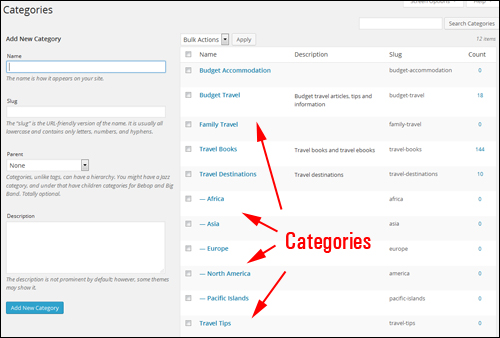
(WordPress categories help search engines index your pages, which improves traffic.)
As we recommend in this article, your website’s post tags and categories should be reviewed and set up earlier on, during the Website Planning Stage.
When configuring your website or blog to automate and improve traffic, you will want to review and make sure that your site’s post tags and post categories have been correctly set up to deliver optimal benefits.
Add A Site Map To Your WordPress Site
A site map that displays all of your site’s pages and posts to visitors is not only a useful navigation tool for users, it can also help external sites find your online content …

(A site map is not just great for visitors, but for web traffic too!)
![]()
An HTML site map and an XML sitemap are two different things. Although Google will index your pages just from an XML sitemap (which plugins like Yoast SEO will create for you – see earlier section), making it easier for visitors to find more pages on your site results in increased traffic.
Your Site’s 404 Page
When visitors searching for your site enter the wrong URL or click on hyperlinks pointing to destinations on your website that no longer exist, they will typically be greeted with a 404 Not Found page …

(Default WordPress 404 Not Found page)
A 404 Error Page can be configured to redirect confused visitors to your functional web pages …
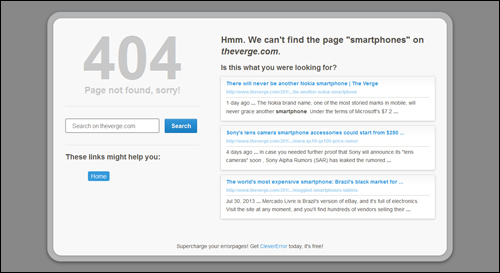
(Configuring your 404 Not Found page allows you to recover traffic that may otherwise be lost.)
![]()
Although a 404 error page can be set up on your server, there are WordPress plugins that allow you to easily configure your 404 page inside your WordPress admin area.
WordPress Traffic System: Configuration Stage – Summary
Once your website or blog has been fully set up and expertly configured, all you then have to do to generate traffic is publish web content on a regular basis.
The process of expertly configuring your WordPress site, however, can be quite involved and requires the configuration and integration of a number of different components and web properties …
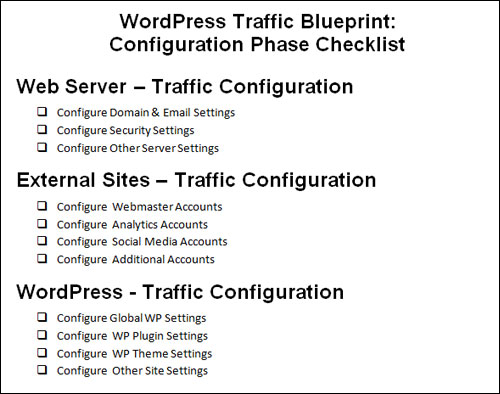
(Traffic Blueprint – Configuration Checklist)
![]()
The kind of skills and expertise involved in expertly configuring a WordPress site typically takes many website developers a long time to acquire.
Once you have configured your WordPress site, the next step is to automate the aspects of the process that can be automated. This step is covered in the next article in our WordPress Traffic System series.
This is the end of Section 3
To read the rest of this article, click here:

![]()
This article is part of a comprehensive series of articles designed to help site owners learn how to grow their business online inexpensively using a WordPress website or blog and proven marketing strategies that are easy to implement.
Subscribe To Our Site And Get Notified When New WordPress Tutorials Get Published!
***
"Wow! I never knew there's so much to learn about WordPress! I bought one of the WordPress for Dummies three years ago, such authors need to be on this course!" - Rich Law, Create A Blog Now
***
